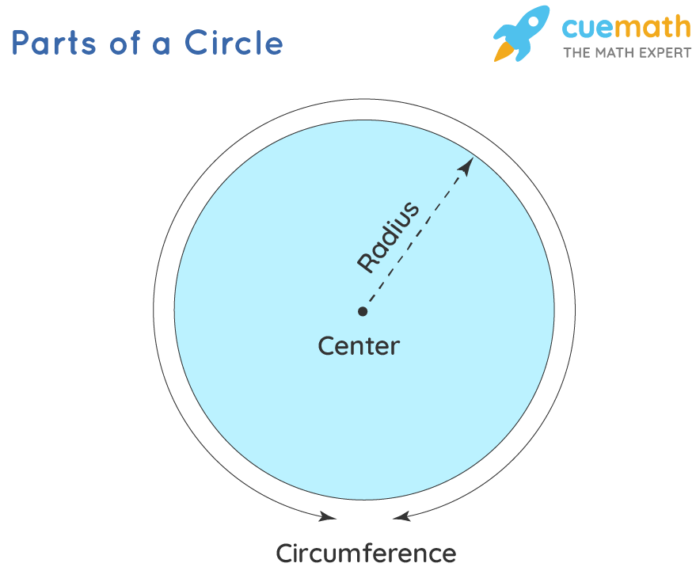The word circle comes from the Greek word krikos, which means ring. It is a circular arc equidistant from a fixed point called the center of a circle. The length of this arc is known as the circumference or perimeter of a circle. The utilization of the concept of the area of a circle is widely observed in several fields, ranging from the simplest to advanced mathematics, science, architecture, etc. Some of the real-world examples of circles are wheels, rings, pizzas, donuts, etc. The symmetric properties of circles are often used to design athletic tracks, buildings, watches, wheels, etc.
Area of Circle and Its Applications
A circle is one of the most basic geometric shapes formed by tracing a point on a plane equidistant from the other point called the center of the circle. This boundary is known as the circumference of the circle. The line joining the center of the circle to any point on its circumference is known as its radius. The area enclosed in the boundary of the circle is called the surface area of a circle. It is widely used in real-life to calculate the area of objects which are circular like circular plot, race tracks, etc. We can easily calculate the surface area of a circle when the length of its radius, diameter, or circumference is known. The surface is calculated in square units, using the formula πr². For example, if a ball has a radius of 5 cm, we can calculate the area of a ball by substituting the value of radius in the formula to get π(5)² sq. cm. Here are some of the applications of the area of a circle in real life:
Architecture
The concept of the area of a circle is frequently used in architecture around the world. Big domes on top of some of the famous buildings are all examples that use this common shape in architecture. Architects usually utilize the circles to add beauty to their designs and decorate various features like windows, roofs, walls, etc.
Science
One of the major applications of circles is in the field of science to design various instruments and devices like particle separators. This shape helps in moving the particles making the design more reliable. The concept of area of a circle is also utilized in space studies like NASA makes use of pi ― the circumference to the diameter’s ratio ― in many applications, including calculating trajectories, estimating the size of planets, measuring craters, etc.
Construction
The wedge-shaped blocks are used to create arches that support massive structures and domed ceilings. These arches support and manage weight more easily than the vertical posts or the horizontal support beams used in other buildings. These arches are quite common in construction and designs for such reasons.
Transportation
The use of circles is evident in transportation– they are used in vehicle tires, in designing roads, crankshafts, and roundabouts. One of the most important inventions of all time is the invention of the wheel that made it possible for everyone to move things at faster speeds to cover a lot of distance. GPS relies a lot on circles to determine the distance and fastest routes. It calculates points to determine the distance from the satellite to the point using circle theory.
Video Games
Gamers apply this geometric concept, along with circle theorems, while creating virtual characters for games. That is how they develop the pathways for animated characters to navigate around the objects in the virtual world. They utilize their knowledge of circles to transform 2-D characters into a 3-D format.
Conclusion
Sound conceptual knowledge of circles and their properties allows students to understand their real-life application in various fields, forming a strong math foundation. Cuemath helps kids to understand math logically, strengthening their reasoning to understand the application of math. To find some learning resources to reinforce the concept, visit the Cuemath website.









